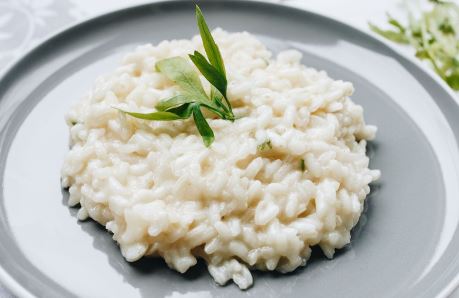1. Pizza
A symbol of Italian cuisine, pizza is known for its simplicity and high-quality ingredients. Traditional Neapolitan pizza has its origins in Naples and is made with San Marzano tomatoes, mozzarella di bufala, fresh basil, and extra virgin olive oil. The crust is thin and chewy. The Italian flag is represented by the Margherita, which has bright red, white, and green toppings. Regional variations exist in pizza, with Roman pizza having a crispier, thinner crust. Italians are proud to maintain the true taste of pizza, placing special emphasis on using fresh, local ingredients. Italian pizza showcases the rich flavors of its basic ingredients and celebrates the art of minimalism, whether it is eaten in a contemporary trattoria or a rustic pizzeria.

2. Risotto
Italian rice dishes like risotto, which is creamy, are typically made with short-grain rice varieties like Arborio, Carnaroli, or Vialone Nano. The rice is added and toasted until it turns translucent after onions or shallots are sautéed in butter or olive oil. The secret to the velvety texture of risotto is to stir continuously and add hot broth little by little. Popular variations include the seafood-infused Risotto ai Frutti di Mare and the saffron-infused Risotto alla Milanese. Because of the dish’s adaptability, inventive additions like Parmesan cheese, mushrooms, and asparagus can be made. Italian culinary artistry is embodied in the flavorful and comforting dish of risotto, which is a demonstration of the art of balance.

3. Pasta
In Italy, pasta is a staple food that is engrained in the nation’s culinary tradition. Pasta is made with water, soft wheat flour, or durum wheat semolina. It is available in a wide variety of shapes and sizes. Every region has its own specialty pasta dish, ranging from the beloved southern dish of spaghetti and tomato sauce to the exquisite northern dish of tortellini in broth. Among the notable kinds are orecchiette, fettuccine, and penne. Italians place a high value on quality ingredients and simplicity. Pasta is frequently served al dente, or firm to the bite. Italy’s regional diversity is reflected in the variety of sauces, such as pesto, carbonara, and bolognese. Pasta is a culinary canvas that embodies the love of flavor and tradition in the country.

4. Gnocchi
Italian dumplings called gnocchi are created with potatoes, flour, and occasionally eggs. The word “nocchio,” which means a knot in wood in Italian, is the source of the name. These pillow-like, soft dumplings are a common substitute for pasta in many Italian regional cuisines. The process of preparation entails boiling and mashing potatoes, then mixing them with flour to create a dough that is formed into tiny pieces. Gnocchi’s distinctive ridges aid in the sauce’s sticking power. Gnocchi, which show off the variety of Italian culinary traditions, have a delightful texture and a comforting, hearty flavor. They are typically served with sauces like tomato, pesto, or brown butter and sage.

5. Lasagna
A traditional Italian dish, lasagna is made up of layers of flat pasta sheets that are usually alternated with flavorful, rich fillings. Pasta is the basic ingredient of lasagna; it is typically baked in the dish or precooked into wide, flat sheets. A range of ingredients, including ricotta cheese, mozzarella, Parmesan, and Bolognese sauce (a meat-based sauce), may be incorporated into the layers. After that, the dish is baked until a golden crust form on top. A representation of comfort food, lasagna is praised for its robust flavors and ability to bind disparate ingredients together to create a satisfying whole.


